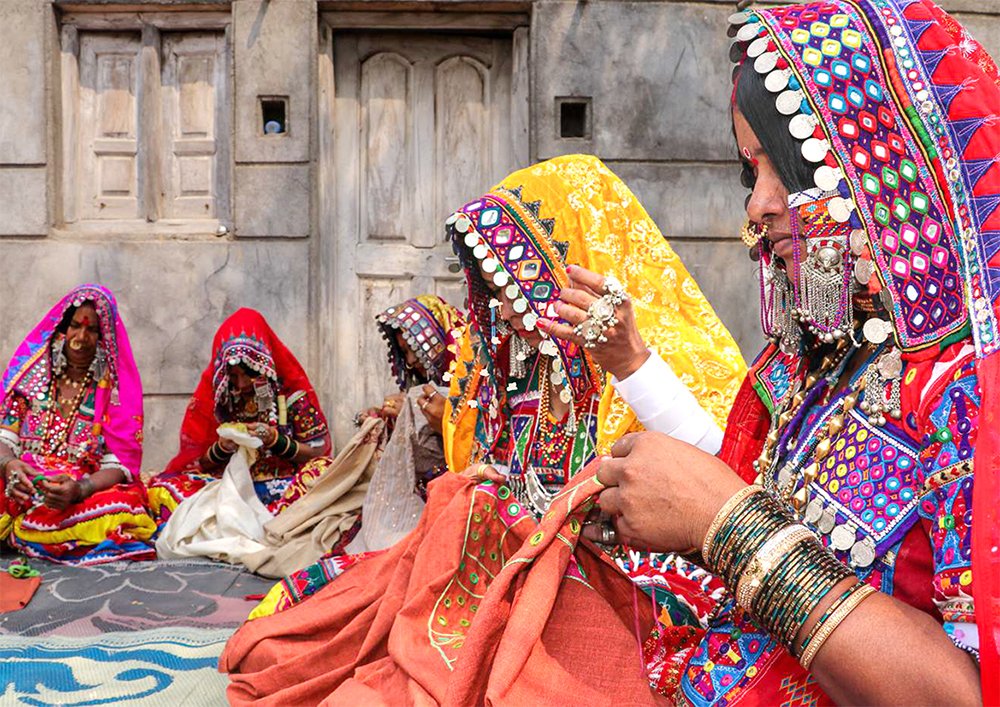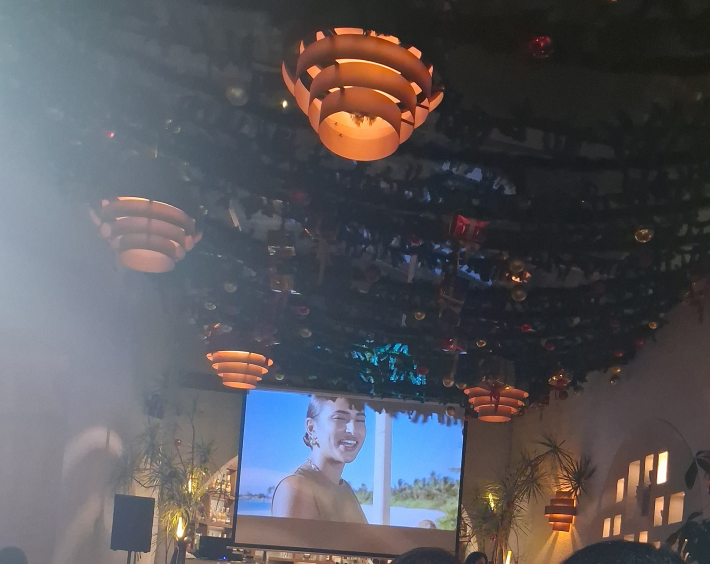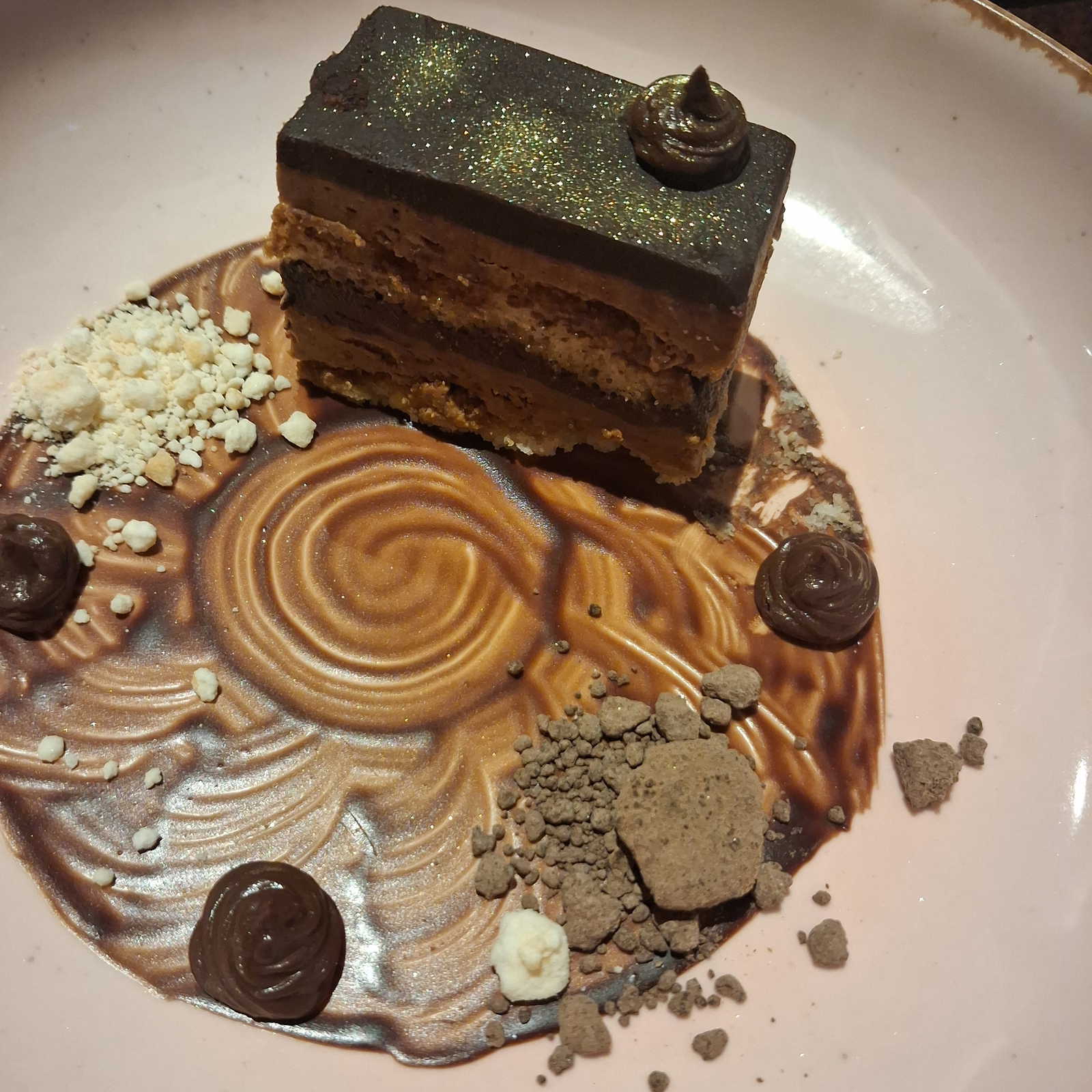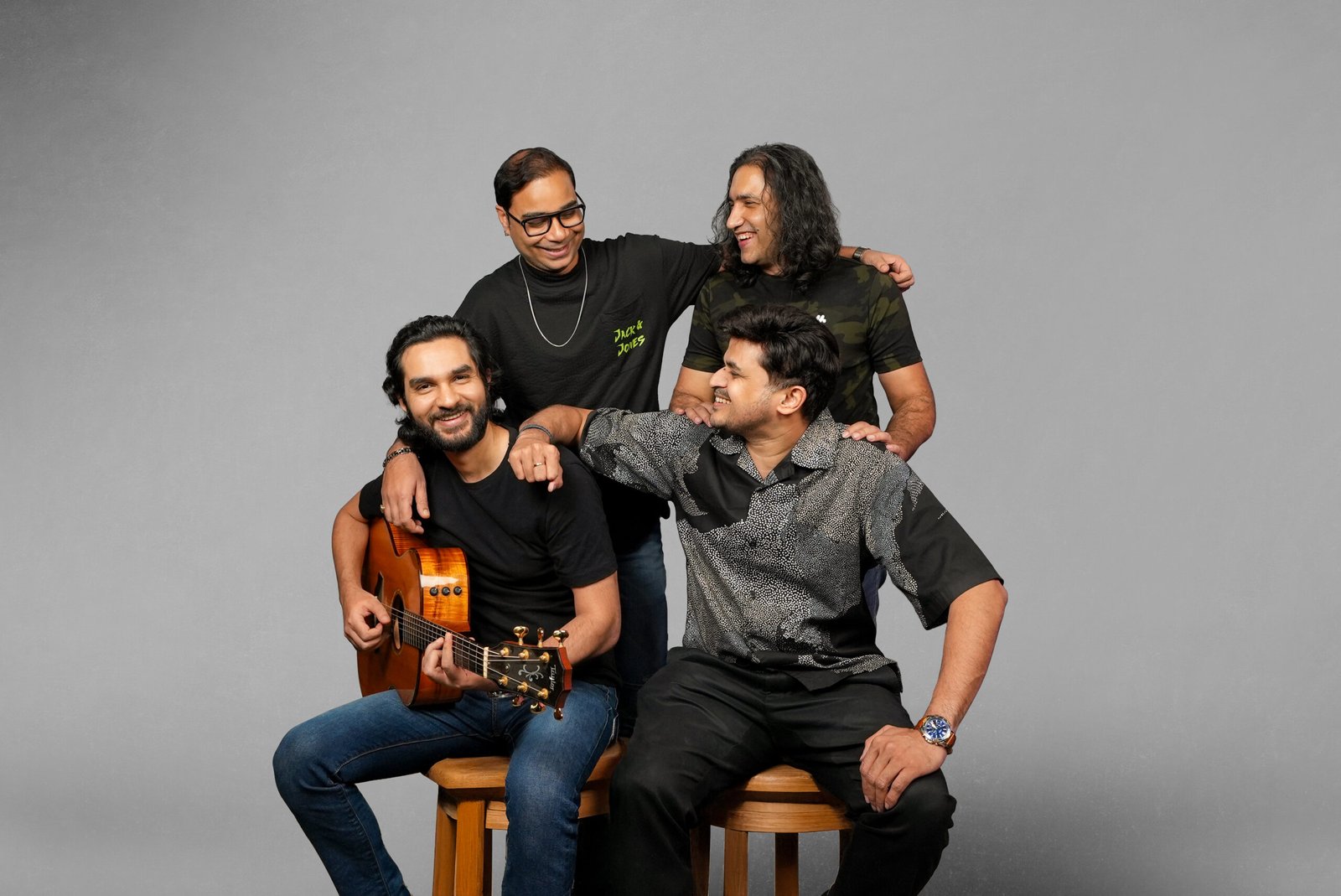Launched in 2017, Banjara Kasuti has made a mark as a change catalyst in the fashion landscape. This impact organisation is devoted to ‘preserve and restore’ the at-risk craft and artform of the Lambani Tribal Community craft while empowering the extraordinary artisans behind every stitch to become ‘financially independent.’ Each masterpiece in their collection narrates a tale. Handcrafted with passion, the time-honoured Kasuti embroidery is created with contemporary designs for the urban audience.
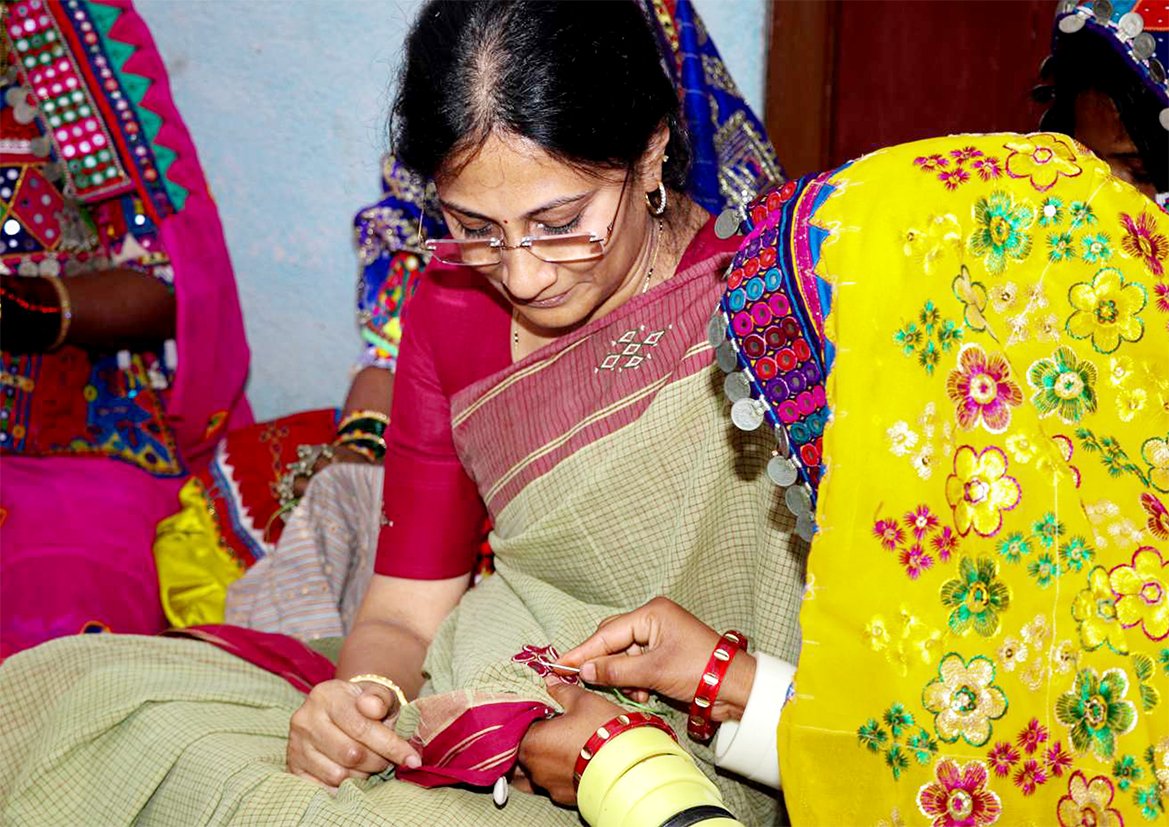
Meet changemakers Asha Patil and Seema Kishore, two visionary women transforming India’s cultural legacy into a transformative initiative. They are reviving disappearing traditions and fostering economic freedom for artisans. Asha, from Vijayapura, champions North Karnataka’s rich culture, helping rural women turn traditional crafts into successful careers. Seema, a fashion entrepreneur, excels at making traditional designs trendy. Despite different backgrounds, they share a dream: preserving the vibrant Lambani craft. Join us in this transformative story.

Over to Banjara Kasuti Founders…
RAJEEV MOKASHI: Asha, what inspired you to focus on reviving Kasuti embroidery specifically? Can you share the story of your non-profit with TheGlitz readers?
My journey to revive Lambani Kasuti embroidery stems from a deep-rooted connection to our community in Vijayapura. Growing up, I frequently visited the Lambani settlements, or tandas, where I was inspired by their rich heritage. However, I noticed that these exceptional artistic skills were struggling to find relevance in today’s world.
Driven by a passion to make a difference, my friend Seema Kishore and I founded Banjara Kasuti in 2017. Our goal was to revive Lambani artisanship by integrating it into contemporary fashion. Our mission extends beyond preservation; we aim to provide artisans with stable financial support, healthcare, and education. Through our work, we’ve realised that this initiative honours a centuries-old art form while creating a sustainable future for these women.
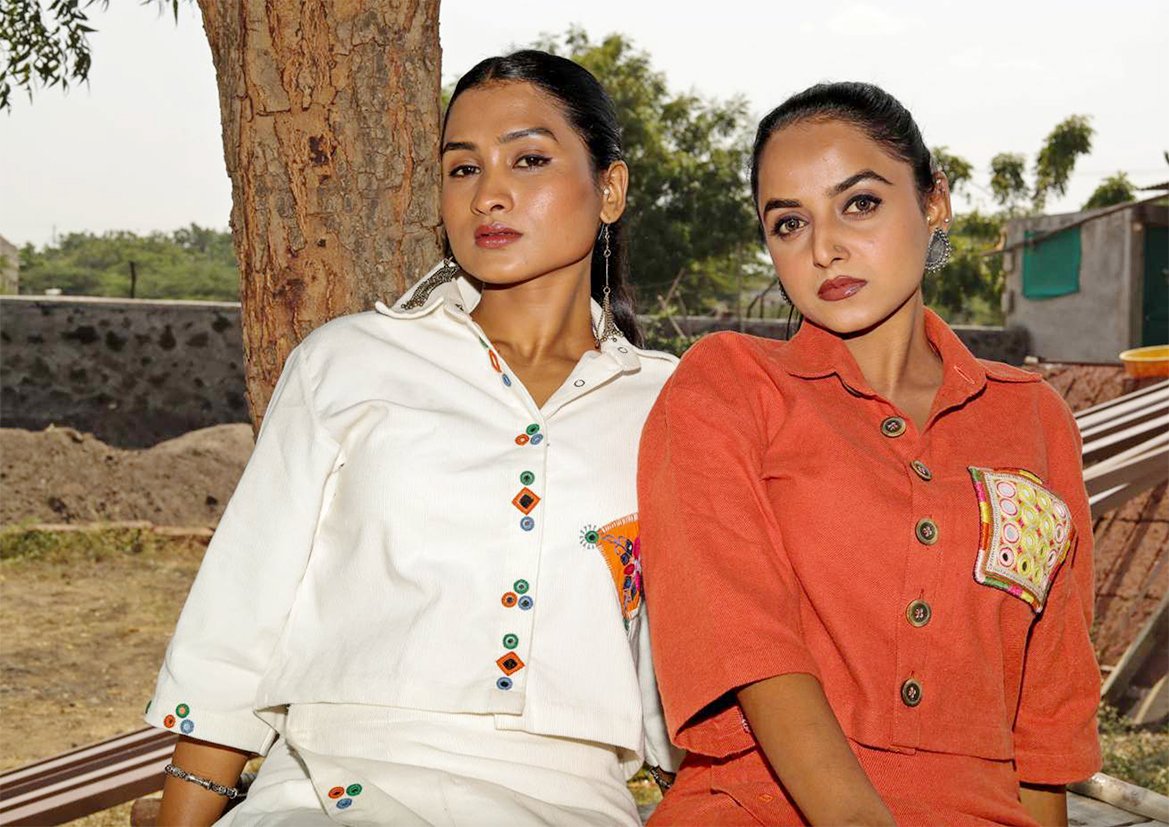
RM: Could you tell us about the Lambadi artisans who do Kasuti embroidery? How important is this craft to their community and traditions?
The Lambanis have a rich artistic heritage, characterised by vibrant textiles and intricate crafts. Lambani Kasuti embroidery is particularly renowned for its fine, detailed needlework, often incorporating motifs inspired by nature, such as flowers, leaves, and geometric patterns. This craft has traditionally been practiced by women, playing a crucial role in preserving these artistic skills.
The community uses decorative patterns for preservation and storytelling, with each pattern symbolising different aspects of their culture and beliefs. There has been a growing interest in Lambani art, especially within sustainable fashion initiatives. Supporting Lambani artisans helps ensure this exquisite art form thrives while fostering cultural preservation and economic empowerment within their community.
RM: Seema, Kasuti embroidery is known for its intricate designs and bright colours. Could you explain some of the traditional Lambani patterns and their significance?
Lambani Kasuti embroidery is famous for its intricate designs and vibrant colours, with each pattern carrying cultural significance. The fine needlework often conveys unity and harmony within the community. Currently, over 120 artisans are dedicated to creating apparel, accessories, and home décor that showcase Lambani women’s craftsmanship. The embroidery not only enhances the garments but also connects the wearer to their cultural roots. Many items feature captivating mirror work, known as “shisha,” which adds a unique shimmer, beautifully reflecting light.
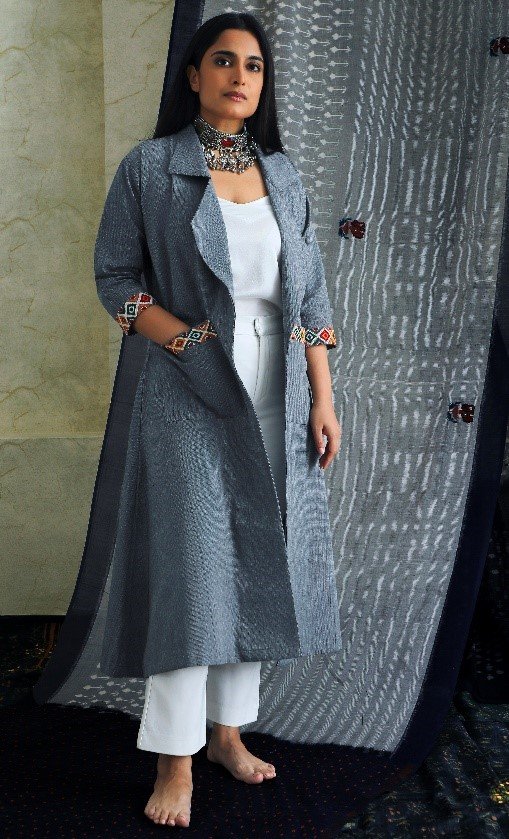

RM: How has your organization adapted these traditional designs for modern tastes in women’s outfits, home linen, and accessories?
We have adapted traditional Lambani designs to meet modern tastes. Our women artisans reinterpret classic motifs into stylish silhouettes for women’s outfits. For home linen, we incorporate Lambani Kasuti embroidery using contemporary colour palettes to enhance modern interiors. By blending tradition with contemporary aesthetics, we honour the craft while ensuring that artisans can secure a sustainable income in today’s marketplace.
RM: In what ways has this initiative provided employment and skilling opportunities for the local community?
Since Banjara Kasuti’s inception in 2017, our initiative has significantly enhanced employment and financial empowerment opportunities for the community. We started with 32 women, giving them a platform to showcase their embroidery skills. Over time, we encouraged these artisans to transition from seasonal, part-time work to full-time employment in a comfortable environment. Today, women from multiple tandas in Vijayapur create beautifully embroidered garments, with plans to employ even more women. During challenging times like the COVID-19 pandemic, we ensured our artisans received consistent work. Our participation in crafts and textile exhibitions has opened new avenues for selling our creations, fostering economic stability within the community.

Can you share a success story of an artisan whose life has been positively impacted by this revival?
One success story that is very close to my heart is of 31-year-old Sunanda Rathore, a resilient single mother of three who was abandoned by her husband. She learnt about Banjara Kasuti and reached out to us. Sunanda’s dedication is unwavering; even when her children were unwell, she came to work, even if it was just for half a day. For her, this job has transformed her life. “It helps me earn money and gives me a dignified life.” The work is less laborious than her previous tasks and provides her with pride and stability.
How do you balance preserving the authenticity of Kasuti embroidery while adding contemporary style elements to appeal to today’s market?
We strike a balance by preserving the authenticity of Lambani embroidery while allowing room for creative expression. The craft stays true to its origins, but our artisans are encouraged to freestyle their embroidery, ensuring the designs reflect their artistry. The base cloth and fashion styles change to adapt to customer preferences, but the embroidery itself remains authentic. We retain traditional motifs and techniques while reinterpreting them into modern silhouettes. Our clothing is designed for longevity, using high-quality materials and timeless styles, which contrasts with the fast-fashion cycle. We also prioritise natural fibres and materials; since most of the items are sourced from Vijayapur itself, there is a zero-carbon footprint.

What challenges have you faced in bringing this traditional craft to a broader, more urban audience?
One of the main challenges in reaching a broader urban audience is overcoming preconceived notions, as Lambani embroidery is sometimes mistaken for Rajasthani embroidery. Additionally, competing with fast fashion’s rapid production cycles can be difficult, as we prioritise quality over quantity. Each piece of clothing we create is unique and has a story behind it. We strive to make our pieces appealing without compromising authenticity or quality.
Could you describe some of the most popular Kasuti embroidered items in your current collection? How and where can customers purchase these products?
Our current collection features a range of popular Lambani-embroidered items that beautifully blend tradition with contemporary style. Bestsellers include kurtis, sarees, and jackets, all adorned with intricate traditional patterns and vibrant colours. We also offer accessories like bags and pouches that highlight our artisans’ craftsmanship. Customers can purchase these products through our online store, which we promote via our Instagram page. We’ve also expanded to Amazon, making it easier to access our collection. Additionally, our products are available at Cauvery Handicrafts Emporium, MG Road (KSHDCL), a Karnataka state-owned showroom in Bangalore.
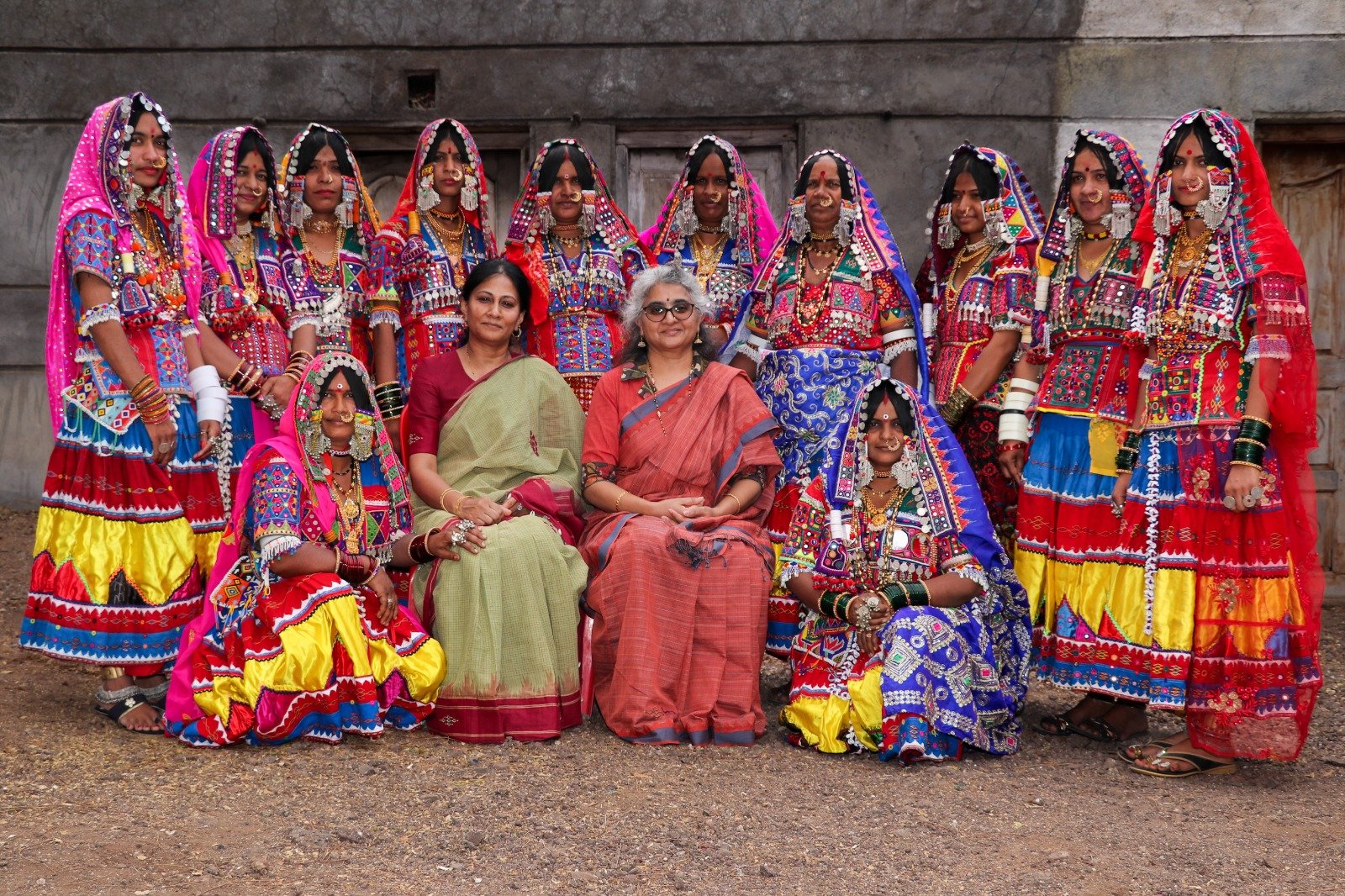
Finally, Asha and Seema What are your goals for further expanding the reach and impact of Kasuti embroidery through your nonprofit?
Our primary goal is to expand the reach and impact of traditional Lambani embroidery by increasing our artisan base to empower more women and promote the craft. We also aim to strengthen our online presence by leveraging social media platforms and e-commerce channels like Amazon to reach a wider audience. Additionally, we plan to collaborate with fashion designers to create exclusive collections that blend Lambani embroidery with modern trends.

